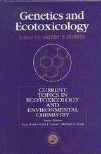Papers in the Biological Sciences

Valery Forbes Publications
Document Type
Article
Date of this Version
10-2011
Abstract
There is increasing concern about the toxicities and potential risks, both still poorly understood, of silver nanoparticles for the aquatic environment after their eventual release via wastewater discharges. In this study, the toxicities of sediment associated nano (<100 >nm)-, micron (2–3.5 μm)- and ionic (AgNO3)-Ag on the sediment-dwelling polychaete, Nereis diversicolor, were compared after 10 days of sediment exposure, using survival, DNA damage (comet assay) and bioaccumulation as endpoints. The nominal concentrations used in all exposure scenarios were 0, 1, 5, 10, 25, and 50 μg Ag/g dry weight (dw) sediment. Our results showed that Ag was able to cause DNA damage in Nereis coelomocytes, and that this effect was both concentrationand Ag form-related. There was significantly greater genotoxicity (higher tail moment and tail DNA intensities) at 25 and 50 μg/g dw in nano- and micron-Ag treatments and at 50 μg/g dw in the ionic-Ag treatment compared to the controls (0 μg/g dw). The nano-Ag treatment had the greatest genotoxic effect of the three tested Ag forms, and the ionic-Ag treatment was the least genotoxic. N. diversicolor did accumulate sediment-associated Ag from all three forms. Ag body burdens at the highest exposure concentration were 8.56 ± 6.63, 6.92 ± 5.86 and 9.86 ± 4.94 μg/g dw for worms in nano-, micron- and ionic-Ag treatments, respectively, but there was no significant difference in Ag bioaccumulation among the three treatments.


Comments
Published in Aquatic Toxicology 105:3-4 (October 2011), pp. 403–411; doi: 10.1016/j.aquatox.2011.07.014 Copyright © 2011 Elsevier B.V. Used by permission.